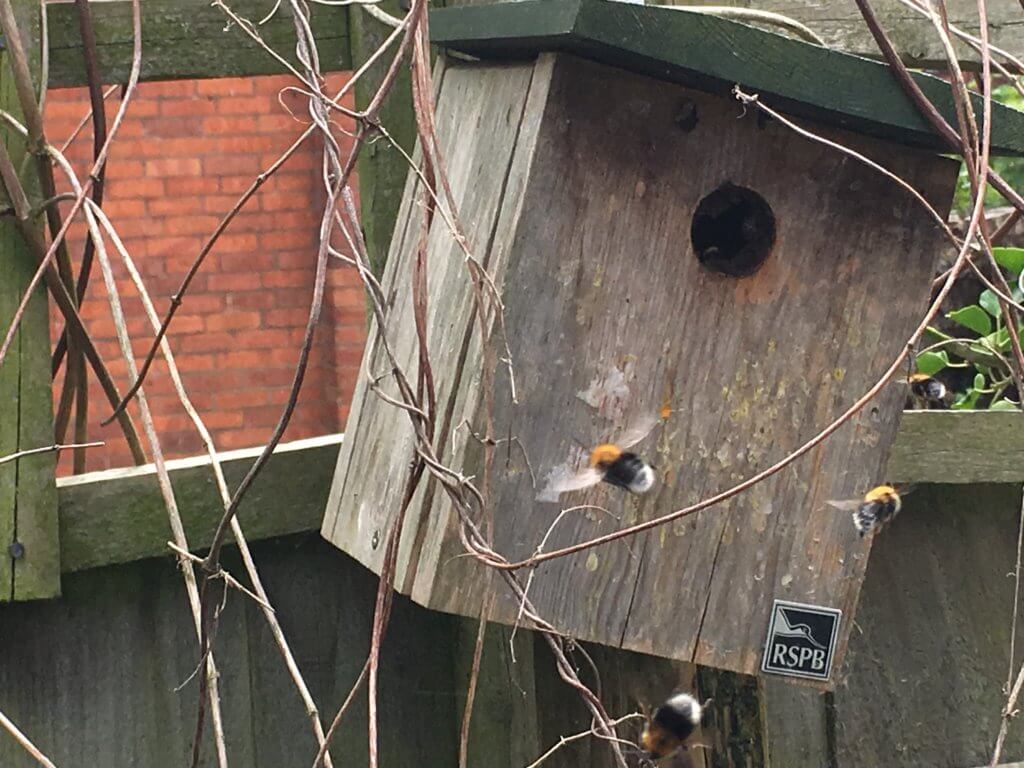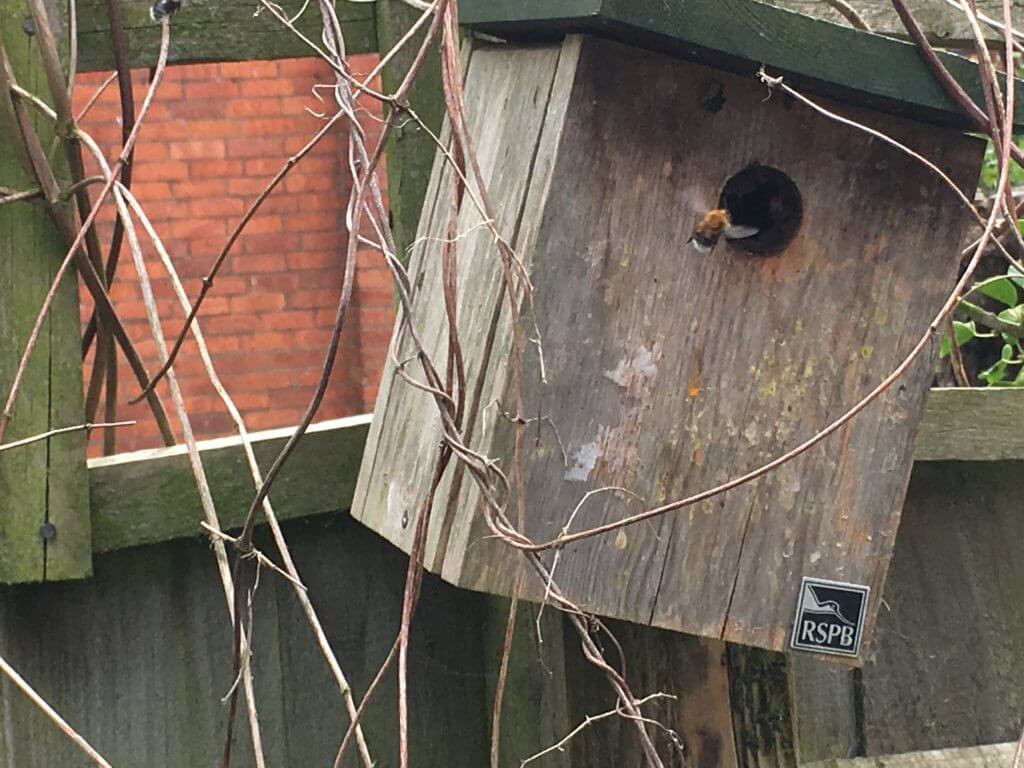
We seem to have Tree Bumblebees in our garden – in a nestbox that has held Blue Tits in the past.
I came back from Spain to find the nestbox was full of bumblebees. They seem quite friendly critters – they don’t interfere with drinking Rioja in the evenings anything like as much as the rather grotty weather has.
While having a cup of tea outside on Saturday evening with a friend he opined that these bumbles were probably Tree Bumblebees and having had a closer look (and using my copy of this book) then I am pretty sure he was right. They are the only bumblebees which go orange/black/white as you move from tip to tail. And you can see that in these couple of photographs – can’t you?
These are fairly recent arrivals in the UK (they arrived naturally not brought in) and yet have spread far and wide since first being found in Wiltshire in 2001. For more info look here.
And if you do find some, then these people would like to hear about it, please.

[registration_form]
A lovely addition to your garden’s fauna.
We had a colony take up residence in one of the bird boxes last year and very welcome they were too. They are not using the same box this year and instead they seem to have found another residence in a hole in my neighbours wall (assuming it’s the same colony). I don’t seem to see them foraging much in the meadow at the back which surprises me as there is an abundance of yellow rattle, red clover, meadow vetchling and common vetch in flower at the moment.
“assuming it’s the same colony”
It isn’t, although it may well have been founded by a queen produced in last year’s nest. Bumble bee colonies die off towards the end of the summer (different species are active over slightly different periods through the Spring summer, some earlier, some later). Before the colony breaks up virgin queens leave the nest find a mate, feed up and then go and hibernate singly. The following Spring they seek out potential nest sites in which to lay eggs and found a new colony and the process starts again.
Tree Bumble bees seem to find bird boxes particularly attractive nesting sites but they are not the only bumble bee species to use bird boxes.
And it’s nice to see them nicely accommodated, Jonathan. (And I hope you saw my apology to you on the first Gove/Defra blog, June 12, page 2).
Much obliged Jonathan.
Any ideas on what their preferred plants are at this time of summer?
In our garden, they seem to like raspberry (which is useful!) and alliums.
Yes here in North Yorkshire they have been here quite a while and are now the commonest Bumble in the garden, Queens especially are very attractive, they also seem slightly more aggressive than some other bees and I have incompetently managed to be stung on 2 separate occasions by them. My favorite bumble is the bilberry bee Bombus monticola.
You might like to see the interesting paper from Bird Study 2015 entitled Nest-site competition between bumblebees (Bombidae), social wasps (Vespidae) and cavity-
nesting birds in Britain and the Western Palearctic, which can be downloaded from http://nora.nerc.ac.uk/511048/1/N511048PP.pdf.